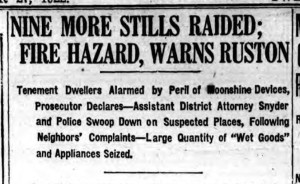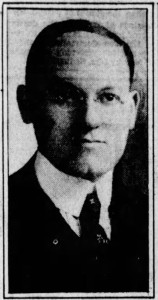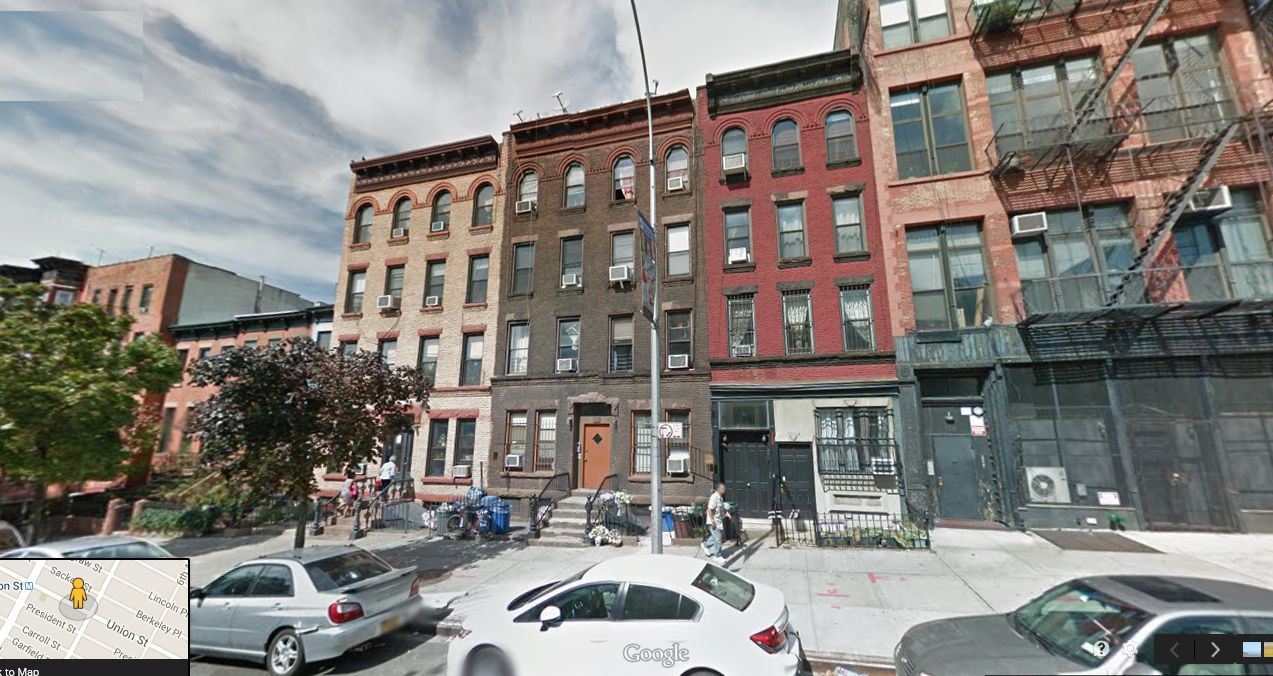HOOCH RAID IN A PARK SLOPE SLUM (1922)

Brownstone Detectives investigates the history of our clients’ homes.
The story you are about to read was composed from research conducted in the course of one of those investigations.
Do you know the history of YOUR house?
********************************************************************************************************************************
Everybody was “thirsty” in 1922.

Not everyone, though, wanted to pay the price of the drink.
While the wet laws during the 1920s were none too popular with many Brooklynites, most of these residents, for safety reasons, though, did not want the hooch being made under their own roof.
As a result, there was no shortage of citizen reports to the police of active neighborhood mash stills.
Even in the slums of Park Slope.
A CASE IN PARK SLOPE
One of these stills was “uncovered in a flat occupied by Daniel Beshara, at 721 Union street” where it was discovered that the hooch was being made in a makeshift still in the middle of the night. Not only illegal, the operation, powered by open flames, was also dangerous.
Beshara and his cousin, James Pamperi, who also lived in the building, were arrested in the act of producing mash.

“In the Pamperi home were found fourteen barrels of mash,” claimed the Brooklyn Standard Union newspaper.
“That dwellers in the tenements are becoming aroused over the fire peril is shown by the great number of complaining letters which have been sent” to the district attorney, demanding that he stamp out these “moonshine dens.”
ASST. D.A. SNYDER TO THE RESCUE
In a grand response to such letters, Assistant District Attorney Marshall Snyder led the raid on the Union street tenement himself. Joining him was a chemist, a detective, a police captain, and four patrolmen.
The building, Snyder noted, was “a large tenement, occupied by twenty families.” It was “one of five similar connecting buildings, housing in all one hundred families, which include more than three hundred children.”
The raid caused so much excitement that it “drew to the house a crowd of five thousand.”
Then, as the Assistant D.A. emerged from the building he was “greeted with cheers from the spectators.”
Apparently, Beshara had been doing a “lively business” at his home as “every night deliveries of reprocessed alcohol would be made at the house, while between 3 and 4 o’clock each morning automobiles would drive up to be loaded with large supplies of moonshine liquor.”
The two men were arrested and prosecuted under the Mullan-Gage law. Since the first 4,000 arrests under this short-lived local version of Volstead Act led to just six convictions and not one jail sentence, it is unlikely that Beshara or his cousin served any time for their operation.
But they probably did not get their mash back.

———————————————————————————————————————–
 Brownstone Detectives is an historic property research agency. Our mission is to document and save the histories of our clients’ homes. From our research, we produce our celebrated House History Books and House History Reports. Contact us today to begin discovering the history of your home.
Brownstone Detectives is an historic property research agency. Our mission is to document and save the histories of our clients’ homes. From our research, we produce our celebrated House History Books and House History Reports. Contact us today to begin discovering the history of your home.